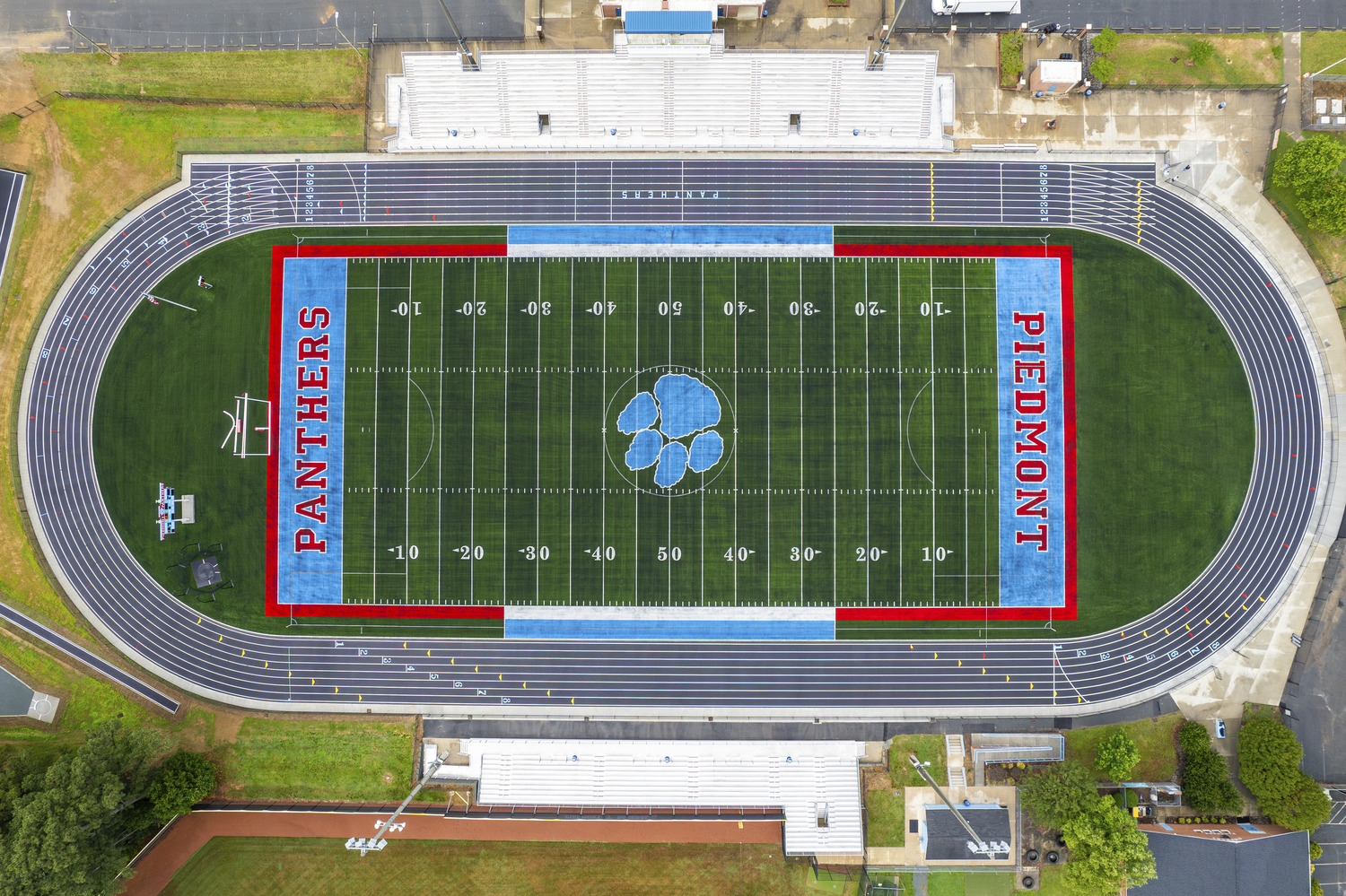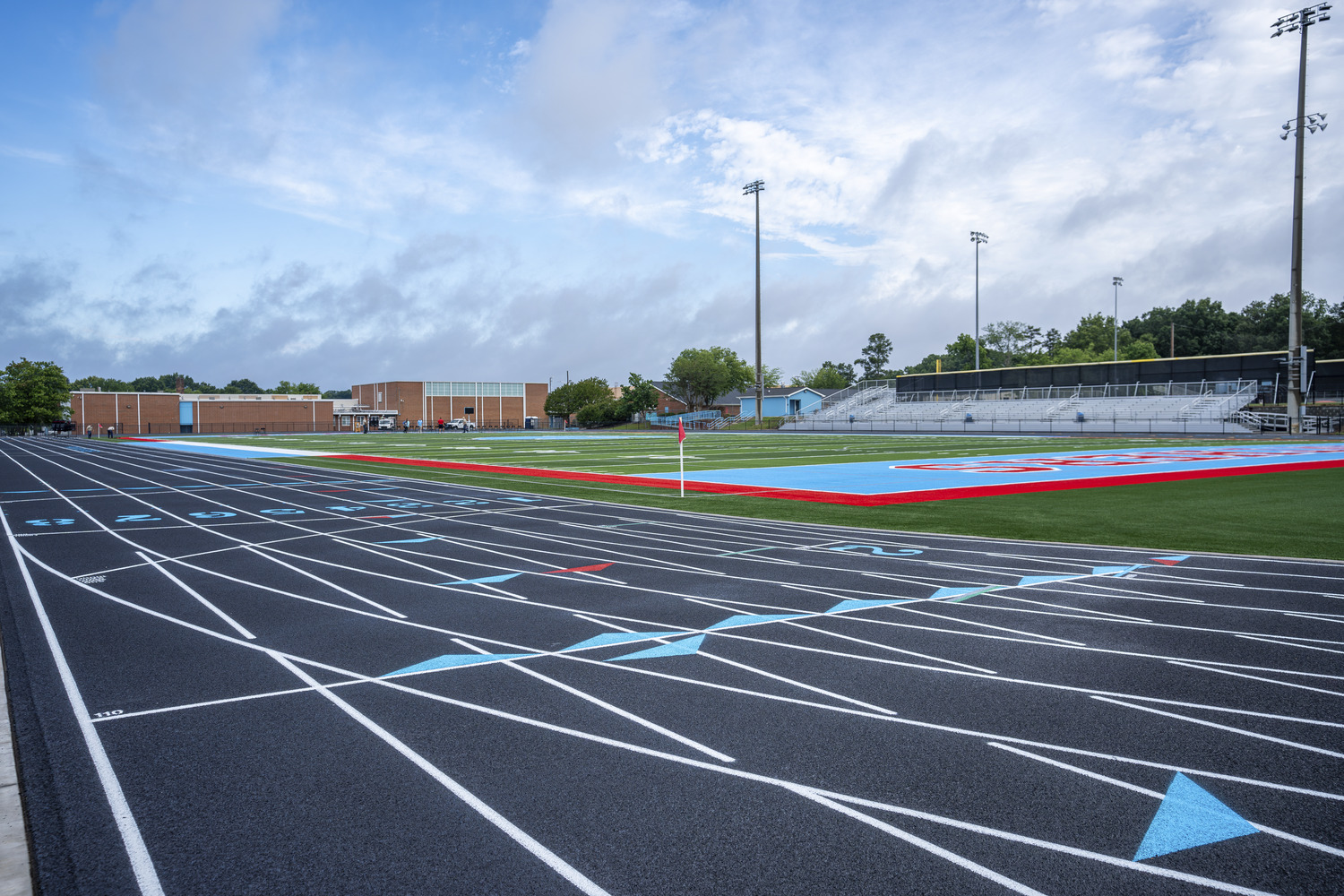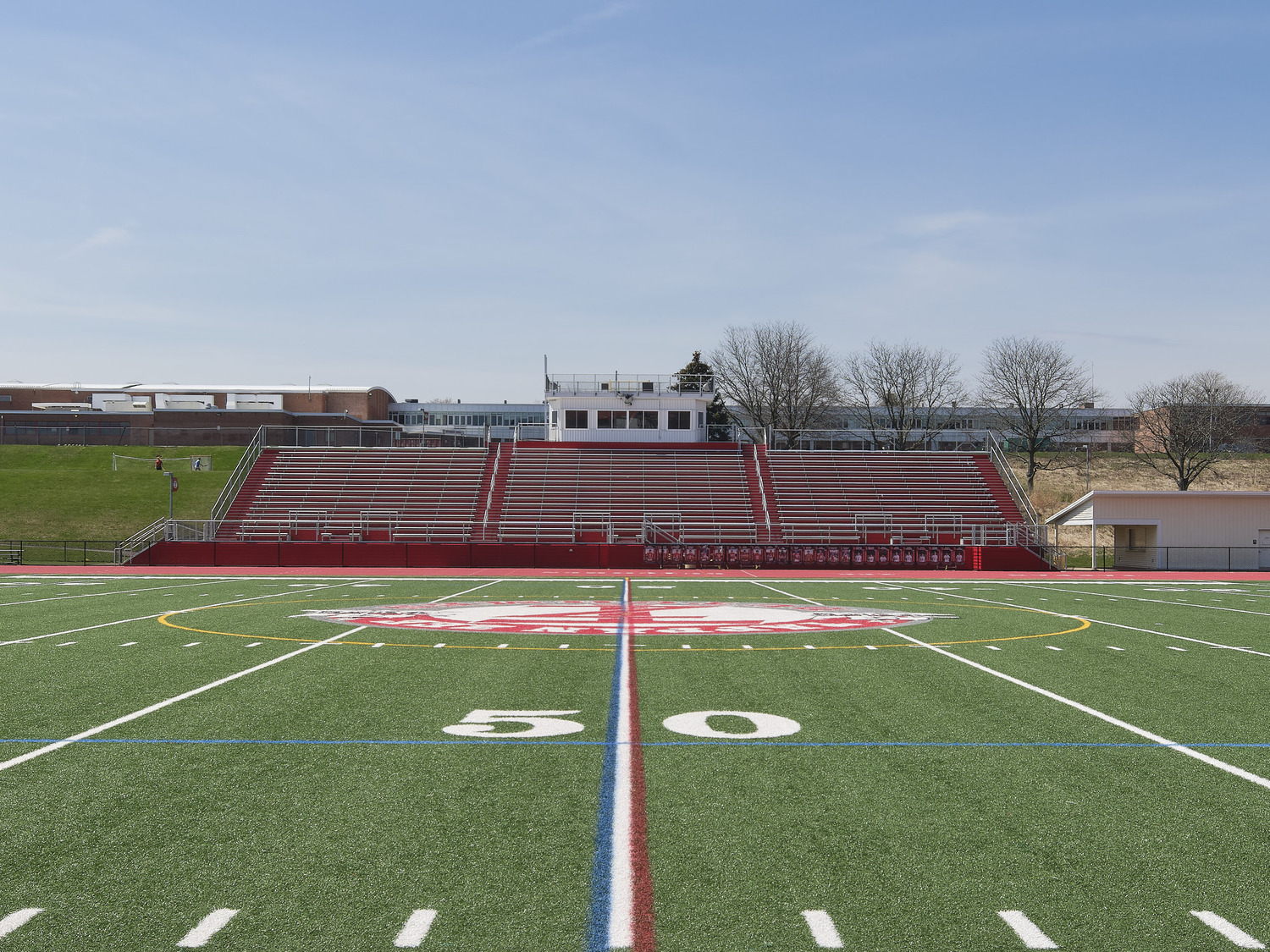Creating optimal environments for K-12 students extends beyond the confines of classroom walls. Just as carefully curated indoor spaces support academic growth, the planning and design of sports complexes is equally vital for student engagement and well-being.
From promoting physical activity to facilitating outdoor learning, these venues should be conceived as vibrant hubs that cater to students’ development—physically, socially and intellectually.
Our approach to quality sports complex design starts with assembling a diverse user group, including administrators, educators, parents, coaches, community members, students and alumni. Collective input from a diverse array of stakeholders can serve as invaluable guides shaping venues that not only address existing pain points but also foster unity and shared enthusiasm for enhancement endeavors.
Once this collective is assembled, we start the conversation with strategic inquiries such as:
- What sports should the field support? Should it accommodate traditional sports on a rectangular field, or should it be envisioned as a versatile “super field” capable of hosting a myriad of sports, including baseball and softball?
- What are the district’s preferences in terms of integrating logos, colors, field types, sizes or infill composition?
- What supplementary amenities should be included, such as restrooms, concession stands, lighting, scoreboards, bleachers and accessibility features?
Whether we’re creating flexible “super fields” or adding new amenities to your existing complex, our K-12 turf field projects are grounded in extensive stakeholder engagement. This collaborative approach helps us strike a balance between quality, performance and community spirit.
Here are just a few examples of projects to stimulate further discussion:
The Synthetic “Super Field” Arena
Fillmore Central School District High School Turf Field

The Fillmore Central School District, a partner of CPL for over 30 years, faced unique challenges due to limited green space on its single campus that combines Pre-K through twelfth. Our collaboration led to the development of a “super field” design to maximize play opportunities for various sports efficiently.
Increasingly sought-after by K-12 districts, “super fields” are multi-purpose athletic spaces that accommodate various sports and activities. They maximize outdoor space utility by providing a single area for multiple sports and promote inclusivity by catering to diverse athletic interests and abilities within the school community.
Fillmore’s multi-sport venue merges separate sports fields into one main field system, featuring removable fencing and goals for easy conversions. Beyond hosting practice sessions and games, this novel concept offers the high school a unique chance to provide the community with multiple experiences within a single space.
Other notable enhancements from this project included upgraded lighting to enable all-day play, new bleachers to accommodate spectators, and dugouts to provide players with spaces for collaboration and planning.
Strategic decisions also went towards upgrading the main game field to synthetic turf, which gives students a more performance-consistent and predictable surface. Many districts are considering this choice to ensure students aren’t at a competitive disadvantage. Teams with synthetic turf can practice more frequently on their main fields without fear of overuse.
The Venue that Blends Performance with Branded Versatility
Union County Public Schools Piedmont High School Athletic Field

Athletic fields often exceed their original purpose, evolving into vital community landmarks. In some instances, they even serve as de facto community centers, particularly in areas where such facilities are scarce.
In Monroe, NC, Union County Public Schools understood this dual significance. One notable project involved enhancing Piedmont High School’s athletic facilities, expanding the track from six to eight lanes and renovating the turf field into a more dynamic community hub.
Achieving this goal required initial steps to fortify the aging field surface for long-term multi-sport use. We stabilized the uneven soil with lime and installed synthetic turf to ensure exceptional durability and reliable performance in all weather conditions.
To cultivate the desired sense of spirit and community pride, branded elements were integrated throughout the venue’s design. This included the school’s signature blue and red color scheme adorning the turf and track field markings, prominently featuring the Piedmont Panthers’ logo at the heart of the field and emblazoning the school’s name across the end zones.

Beyond hosting Piedmont’s football, track, soccer and lacrosse teams, this venue has evolved into a central hub for community events, rallies and gatherings, fulfilling the objective of creating a space where residents and visitors alike can come together and enjoy various activities.
The Modern Field with Alternative Infills
South Orangetown Central School District High School Turf Field

While synthetic grass turf with crumb rubber infill offers durability and low maintenance, there are situations where alternative cushioning is preferred. Plant-based materials like coconut fibers, walnut shells or sand provide distinct safety benefits such as better temperature regulation, reduced heat retention and improved shock absorption.
It was these advantages that prompted the South Orangetown Central School District in Orangeburg, NY, to replace Tappan Zee High School‘s existing turf field with an alternative infill system.
Leveraging feedback from key stakeholders and experts specializing in synthetic sports turf replacement, this project opted for a more environmentally conscious coconut infill system created for controlled performance and impact safety.

Additional design decisions included centralizing the school’s logo on the field and integrating red, white, gray and black colors throughout to highlight South Orangetown’s prominent brand identity. The project also involved replacing their old wooden grandstand with a sturdy steel structure to accommodate more spectators.
Emphasizing the well-being of the school’s students and athletes, the adoption of coconut infill has elevated this turf field into a safe and vital public asset that the community can appreciate for years to come.
These sports complex designs represent vibrant, flexible environments where players revel in their passion for the sport and people come together as one—turf triumphs on both the field and the legacies they leave within the hearts of students and communities.

